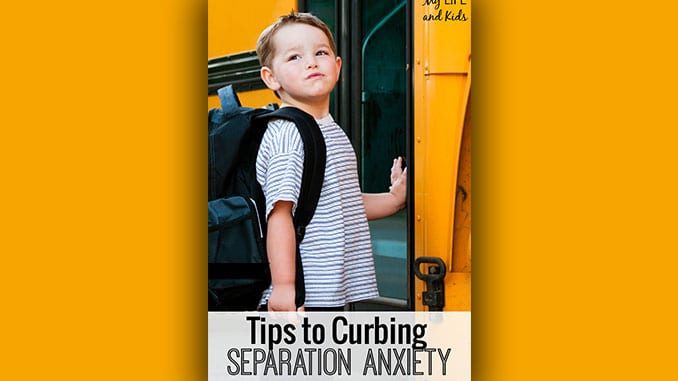
Here are a few tips to reassure children and help them grasp the concept of your exit and return.
Published: August 30, 2019
By: Denise Morrison Yearian
Separation anxiety is a normal developmental stage for most children. It usually sets in between six and 12 months of age, and can last two to four months. For some toddlers, it reappears between 18 and 24 months and then gradually diminishes as language development improves.
Separation anxiety is the result of a new cognitive skill called object permanence. Children can now remember objects and specific people that were once present but now are not. They may search for a toy that has disappeared and can remember who is missing from their regular setting. During this stage, youngsters understand that people they are attached to leave, but they cannot yet comprehend about their return. They can also recognize signals an adult is about to go, so their anxiety may build even before the actual exit. Because they don’t understand the concept of returning, they have no idea when that person will come back and separation anxiety intensifies.
To reassure children and help them grasp the concept of your exit and return, consider these 10 tips:
- Make it a Game. Play age-appropriate games, such as “Peek-a-Boo” and “Hide-and-Seek.” Another one babies relish is, “Where is Baby?” Place a lightweight receiving blanket over your child’s head and ask, “Where’s baby?” then pull the cloth away and with a big smile and gentle, animated voice say, “There you are!” Also place the cloth over your own head, or partially hide behind a chair or around a corner where you will be easily discovered.
- Go Gradual. When your child is playing at home, casually mention you are going into another room and will return. Leave for 30 seconds then come back with a cheerful “Hello!” or “See? I’m back!” Gradually increase to a minute, making sure your child is safe before you step out. He will begin to learn that though you may be gone for a bit, you will come back.
- Do a Trial Run. Enlist the care of a familiar relative or friend in your home for short amounts of time – 30 minutes, building up to an hour. Before leaving home, spend a few minutes one-on-one with your child. Then engage the sitter in your interaction.
- Ease Into the Environment. When you leave your child with a caregiver, let your little one know beforehand you can only stay for a few minutes and then you’ll have to go. Give a two-minute warning, then a one-minute warning before you leave.
- Keep Goodbyes Brief. When it is time for you to go, be simple and direct. Say goodbye quickly, with a clear, loving statement that you will be back. Then leave.
- Don’t Slip Out. You want to foster trust, so always say goodbye. Don’t exit when your child isn’t looking.
- Use Distractions. Before leaving, get your child and the caregiver involved with an activity to take the focus off of you.
- Rely on the Familiar. Use objects your child has bonded with – a stuffed animal, blanket or toy – to comfort him when you are not around.
- Watch Yourself. Be affectionate, but avoid making a big production about leaving. Stay calm, even if your child is crying. He will pick up on your emotions. Also, speak positively about the environment to others when your child is present.
- Maintain Routines. When schedules and routines are the same throughout the day, children know what to expect and aren’t caught off guard. Also, make sure he is rested and well fed before you leave; children who are tired or hungry are less tolerant of parental absence.
Denise Morrison Yearian is the former editor of two parenting magazines and the mother of three children and four grandchildren.
